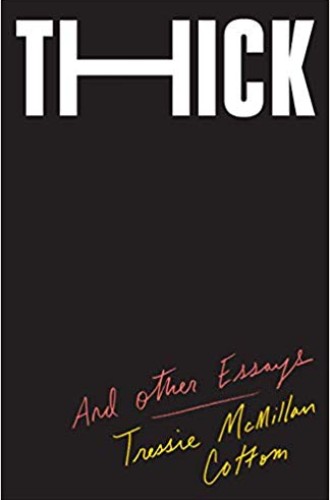Tressie McMillan Cottom asks who black women’s voices are for
Cottom interrogates her own story loudly enough for others to hear themselves in it.
I started reading Thick during an airport incident involving a misplaced bag and multiple flight delays. I was tense—feeling the slow burning rage of being treated paternalistically with no resolution in sight.
Airport incidents have a way of bringing dynamics of blackness and womanhood out into the open. I knew I could not express myself in full: my image would precede me, impatience would be stereotypically assigned, carelessness on my end would be assumed, my African name would only add another layer of paternalism, my “educated accent” could only reach so far, my character would be judged, my words anticipated. My helplessness would be labeled as aggressiveness, ignorance, and emotionalism. These frameworks would allow people to think they knew me. (It is amazing how my black womanhood miraculously gifts every person I encounter with this prophetic ability!)
Unfortunately, black women are used to these frames. They invoke thickness—of skin, of affect, of narrative—and all because of the contours of the black female body. Tressie McMillan Cottom is an expert on thick narratives, and her storytelling is masterful. Her interrogation of her own story and its necessary messages echoes long and loud enough that most black women in America can hear themselves in it, especially since the rest of America won’t hear them.
Read our latest issue or browse back issues.
Thick gets into the messiness of US culture, exposing what Americans want to say but are sometimes too afraid or too unaware to say. We fall into traps of neoliberalism, aesthetics, or politicking because we are afraid of losing our structure, our stability, and all that we know. We are afraid of losing our systems and processes, our ability to determine and rule, our sense of security. In essence, this book is about the compromises we make for the sake of control.
Cottom’s frames are jarring. She addresses the violence of form-fitting, beauty possession, competency, white culture expertise, the complexity of black nomenclature, the pricey-ness of poverty, the thievery of black girlhood, and the limits of black women’s vocal range. Each illustrates the crooked reality of black women’s lives and livelihoods in the United States.
Although these issues are made to seem like the problem of black women, Cottom is clear: while they restrict black women, they are not actually about black women. They are about the cultural commitments and interior workings of white culture. In the United States, black life, women’s life, and white life were made for white people. The world and subsequently everyone’s position and place therein exist at the whim and at the want of white desire.
Cottom shines the light in everyone’s eyes. Black women are not the culprits when it comes to the details of their difficult social and cultural lives. Those who choose to image black women in a certain way are the culprits. Cottom breaks down the structures and machinations in which all of us—the powerful, the empowered, and the powerless—navigate.
Cottom’s final chapter summarizes Thick’s message. Black women’s voices, while free in some spaces, are primarily policed by white vocality (and by the livelihood of white opinion). Cottom is right—the access to “whim” is afforded by race. Black women aren’t afforded the luxury of living, let along writing, on whim. They cannot lead lives of chance and inventiveness; this is the legacy and property of whiteness.
When Cottom’s message is peeled back to its core, Thick delivers a hard but necessary truth: black women’s voices are for white people. Black women’s stories cannot merely be until the white public finds value and purpose in them as they are. As black women experience this regulation of their voices, delay continues to echo. When will black women be able to lead lives not reliant on white whim and permission? The answer is unknown, but Cottom at least gives us an honest and thick account of what is true about white society.
The Christian church does not escape this very real and immediate problem. While Cottom’s book is not a religious text, it speaks to and about persons who claim to lead religious lives, who profess religious identity, and who assert religious precepts all while living in (and into) a society that positions them at whim based on their cultural identity.
Thick is not about the church curated by religious orders and practices. It is about the church that goes home, to school, and to work, taking up space it assumes is its own, that wants to worship with “another” but refuses to give up the ugly parts of its privilege for the sake of the gospel. Thick is for the church that never thinks about what parts of its essence need to decrease, or better yet, die, so that God might increase, or better yet, live. Cottom’s work reminds the church that its love of cultural norms and practices over the radical religious revisions of such norms is unbearably thick.







